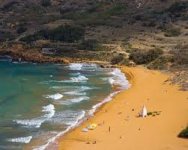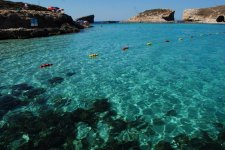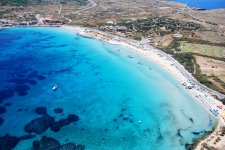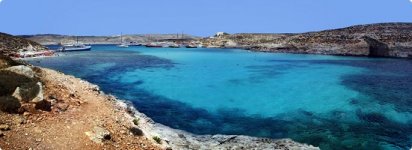Install the app
How to install the app on iOS
Follow along with the video below to see how to install our site as a web app on your home screen.

Note: This feature currently requires accessing the site using the built-in Safari browser.
You are using an out of date browser. It may not display this or other websites correctly.
You should upgrade or use an alternative browser.
You should upgrade or use an alternative browser.
Photos of the Maltese people.
- Thread starter oreo_cookie
- Start date
Hauteville
Elite member
- Messages
- 820
- Reaction score
- 162
- Points
- 0
- Ethnic group
- Italian
- Y-DNA haplogroup
- I-S185
- mtDNA haplogroup
- U5b2b
Eheheh where i live there are some people with the obsession to be overtanned.
Mars
Regular Member
- Messages
- 206
- Reaction score
- 25
- Points
- 28
- Ethnic group
- Italian
- Y-DNA haplogroup
- R1b1a2a1a1b3
- mtDNA haplogroup
- HV
I have a question... Pardon me if you already talked about it  Malta is the only country in Europe where a semitic language is currently spoken as national language. Where does it come from? I heard it's similar to a tunisian dialect, but I'm not sure about it. Malta has been a stronghold of christianity for several centuries (the Knights of Malta), so it's quite surprising to me.
Malta is the only country in Europe where a semitic language is currently spoken as national language. Where does it come from? I heard it's similar to a tunisian dialect, but I'm not sure about it. Malta has been a stronghold of christianity for several centuries (the Knights of Malta), so it's quite surprising to me.
Maleth
Junior Member
- Messages
- 1,917
- Reaction score
- 335
- Points
- 83
- Location
- Malta
- Y-DNA haplogroup
- EV13 A7136 y18675G+
- mtDNA haplogroup
- H
I have a question... Pardon me if you already talked about itMalta is the only country in Europe where a semitic language is currently spoken as national language. Where does it come from? I heard it's similar to a tunisian dialect, but I'm not sure about it. Malta has been a stronghold of christianity for several centuries (the Knights of Malta), so it's quite surprising to me.
For many centuries Malta was part of Sicily and shared the same fate in History until the arrivals of Knights of St John, that were defeated by the ottomans in Rhodes. Part of the history prior to this was the Muslim occupation (Aglabite = Berbers/Arabs from Tunisia) have besieged Sicily (and Malta who was part of Sicily) with the aid of the Moors from Spain. for the longest (as some regions spent less time under this control) for approx 200 years. During this period Arabic was established as the lingua franca of these occupied regions. The expulsions and forced conversions did happen until later tho under king Fredrick II in 1240 so the language had a good time to get a grip.
However unlike Sicily Malta (which of course is much smaller) had remained totally uninhabited since on the Aglabid attack on the Island was either taken into slavery or killed and left the Byzantine castle (today Mdina) in ruines (as documented by Al Hymardi). Malta was repopulated at a later stage (no one knows when exactly) from Sicily. The new people by then spoke what is called a Siculo/Arabic. This is the language that Modern Maltese is derived from. The only difference in Modern Maltese that as time went by some 60% of the vocabulary has become latinised and to a lesser extent Anglicized too, but conjugated in a Semitic structure.
There have been efforts especially since the departure of the Knights by pro Italian movements for Italian to be the state language and even until the beginning of British rule they were moving forward. In fact lots of poetry, the law courts and some news papers were all in Italian, however the Siculo/Arabic which has developed to Maltese was still very strong in the Countryside (I call them agrarian Villages). However the pro Italian movments were crushed during and after world war II due to Musolini joined forces with Nazi Germany, and the Now Maltese was revived and British was replaced as the language used by the societa alta.
Today both Maltese and English are National Languages
This is what Maltese sound like if you are interested both in speach and song
https://www.youtube.com/watch?v=QD1RbprRM3M
Mars
Regular Member
- Messages
- 206
- Reaction score
- 25
- Points
- 28
- Ethnic group
- Italian
- Y-DNA haplogroup
- R1b1a2a1a1b3
- mtDNA haplogroup
- HV
This is extremely interesting... So, were these sicilian colonists maybe the last arabo-sicilians (arabized sicilians, or descendents of the berber/arab invaders of medieval Sicily)?However unlike Sicily Malta (which of course is much smaller) had remained totally uninhabited since on the Aglabid attack on the Island was either taken into slavery or killed and left the Byzantine castle (today Mdina) in ruines (as documented by Al Hymardi). Malta was repopulated at a later stage (no one knows when exactly) from Sicily. The new people by then spoke what is called a Siculo/Arabic. This is the language that Modern Maltese is derived from.
Maleth
Junior Member
- Messages
- 1,917
- Reaction score
- 335
- Points
- 83
- Location
- Malta
- Y-DNA haplogroup
- EV13 A7136 y18675G+
- mtDNA haplogroup
- H
This is extremely interesting... So, were these sicilian colonists maybe the last arabo-sicilians (arabized sicilians, or descendents of the berber/arab invaders of medieval Sicily)?
Islamisized Sicilians I would say as the DNA states. Berber dna peeks at 2 % in Malta and I believe also in Sicily, and that could also be part prior since it is found in very rare freaquencies in Europe that never had Berber/Arab rule. Since then, after the Norman conquest Both Islands it was once again a period of Transition peaked by the Aragonese / Swabians (hofenstaufen) when Muslims (with Jews) were either forced to convert or expelled. Sicily was totally Latinised (with just traces of Arabic like Spanish) more so with the Unification with Italy, and Malta retained the Siculo/Arabo that developed into Modern Maltese
bicicleur 2
Regular Member
- Messages
- 6,367
- Reaction score
- 1,401
- Points
- 113
Islamisized Sicilians I would say as the DNA states. Berber dna peeks at 2 % in Malta and I believe also in Sicily, and that could also be part prior since it is found in very rare freaquencies in Europe that never had Berber/Arab rule. Since then, after the Norman conquest Both Islands it was once again a period of Transition peaked by the Aragonese / Swabians (hofenstaufen) when Muslims (with Jews) were either forced to convert or expelled. Sicily was totally Latinised (with just traces of Arabic like Spanish) more so with the Unification with Italy, and Malta retained the Siculo/Arabo that developed into Modern Maltese
i was told they were non-islam arabs, they helped the malteser tempeliers, crusaders resist resist the Turkish naval expansion
they eventualy succeeded after a long siege, when finaly the Turks got the plague
Maleth
Junior Member
- Messages
- 1,917
- Reaction score
- 335
- Points
- 83
- Location
- Malta
- Y-DNA haplogroup
- EV13 A7136 y18675G+
- mtDNA haplogroup
- H
i was told they were non-islam arabs, they helped the malteser tempeliers, crusaders resist resist the Turkish naval expansion
they eventualy succeeded after a long siege, when finaly the Turks got the plague
I did not get your post right bicicleur. Who was non-Islam arabs? The people that came from Sicily was the base stock of Modern Maltese population although there have been some genetic inputs as time went by. The Maltese fought with the knights (estimated 6000 Maltese died in Battle) on the Ottoman onslaught that started in May 1565 till they retreated defeated in September same year.
https://www.youtube.com/watch?v=rubruP9p4i8
oreo_cookie
Banned
- Messages
- 606
- Reaction score
- 27
- Points
- 0
Maltese are genetically similar to today's Sicilians, except a few percentages more North African than the Sicilian average -- but NOT necessarily more so than the people in Agrigento and Trapani regions whose results I have seen.. which implies to me that there are places in Sicily today where the people are still genetically the same as a Maltese, and places where they never quite would have been (places that didn't send many people to Malta, like Messina and Enna for instance).
Maleth
Junior Member
- Messages
- 1,917
- Reaction score
- 335
- Points
- 83
- Location
- Malta
- Y-DNA haplogroup
- EV13 A7136 y18675G+
- mtDNA haplogroup
- H
From the dna breakdowns I have seen I cannot recall seeing a higher percentage of Berber / North African M-81 then in Sicily, however J1 at 8% seems to be higher then the maximum of 5% that seems to be found not only in Sicily but also mainland Italy....if its anything to go by. At the same time it seems Malta has a few percentages higher of R1b compared to Sicily but putting all together it makes the differneces superficial
Hauteville
Elite member
- Messages
- 820
- Reaction score
- 162
- Points
- 0
- Ethnic group
- Italian
- Y-DNA haplogroup
- I-S185
- mtDNA haplogroup
- U5b2b
In Lazaridis et al most of the sicilian samples are from Trapani and still maltese are more north african admixed.Maltese are genetically similar to today's Sicilians, except a few percentages more North African than the Sicilian average -- but NOT necessarily more so than the people in Agrigento and Trapani regions whose results I have seen.. which implies to me that there are places in Sicily today where the people are still genetically the same as a Maltese, and places where they never quite would have been (places that didn't send many people to Malta, like Messina and Enna for instance).
http://www.eupedia.com/forum/thread...rican-autosomal-DNA-from-Lazaridis-et-al-2013
Hauteville
Elite member
- Messages
- 820
- Reaction score
- 162
- Points
- 0
- Ethnic group
- Italian
- Y-DNA haplogroup
- I-S185
- mtDNA haplogroup
- U5b2b
E-M81 Ydna of Sicily is from 1,5% to 2,1% change a bit from study to study. J1 is from a minimum of 3% at maximum of 6% overall but with the peak of Agrigento 11%.From the dna breakdowns I have seen I cannot recall seeing a higher percentage of Berber / North African M-81 then in Sicily, however J1 at 8% seems to be higher then the maximum of 5% that seems to be found not only in Sicily but also mainland Italy....if its anything to go by. At the same time it seems Malta has a few percentages higher of R1b compared to Sicily but putting all together it makes the differneces superficial
Hauteville
Elite member
- Messages
- 820
- Reaction score
- 162
- Points
- 0
- Ethnic group
- Italian
- Y-DNA haplogroup
- I-S185
- mtDNA haplogroup
- U5b2b
Probably yes, the arab-sicilian is extinct in 1245 with the expulsion of the last muslims in Federico II era.This is extremely interesting... So, were these sicilian colonists maybe the last arabo-sicilians (arabized sicilians, or descendents of the berber/arab invaders of medieval Sicily)?
Maleth
Junior Member
- Messages
- 1,917
- Reaction score
- 335
- Points
- 83
- Location
- Malta
- Y-DNA haplogroup
- EV13 A7136 y18675G+
- mtDNA haplogroup
- H
In Lazaridis et al most of the sicilian samples are from Trapani and still maltese are more north african admixed.
http://www.eupedia.com/forum/thread...rican-autosomal-DNA-from-Lazaridis-et-al-2013
There seem to be lots of figures thrown all over the place never knowing which one to believe
http://www.nature.com/ejhg/journal/v17/n1/abs/ejhg2008120a.html
from http://www.eupedia.com/forum/threads/25067-Genetic-history-of-Sicily-Greeks-Arabs-Normans-and-others
although the Lazardi study seems to be more recent....but still why do figures change so much. Probably because of very small sampling.
Best of Sicily web site, have a dna site but it seems very out dated http://www.bestofsicily.com/genetics.htm
and also the wikipedia on Maltese geneolgy
http://en.wikipedia.org/wiki/Maltese_people have horrible outdated dna information
Angela
Elite member
- Messages
- 21,823
- Reaction score
- 12,329
- Points
- 113
- Ethnic group
- Italian
From the dna breakdowns I have seen I cannot recall seeing a higher percentage of Berber / North African M-81 then in Sicily, however J1 at 8% seems to be higher then the maximum of 5% that seems to be found not only in Sicily but also mainland Italy....if its anything to go by. At the same time it seems Malta has a few percentages higher of R1b compared to Sicily but putting all together it makes the differneces superficial
Maleth, as has been pointed out elsewhere, J1 undoubtedly has as many subclades as any other y lineage. Unfortunately, all the money is going to R1a and R1b, so we don't know about them and we certainly don't have a lot of studies testing for them. The only one of which I am aware that broke it down at least into P58 and the rest for Italy is the Boattini et al studyto which I have linked numerous times.
Since you may have access to a lot of data from Malta related projects you perhaps have a better handle on the occurrence of specific subclades in Malta. Of course, as always, these kind of "consumer" based sets of data may not be representative of the population as a whole, and therefore don't carry the same weight as randomly chosen samples in scientific studies, and from the ones I have seen, people often don't pay for the full subclade resolution, so it's not going to provide a full and accurate picture.
If someone wants to generally know the distribution of J1 in Europe, Maciamo has provided a map:
http://cache.eupedia.com/images/content/Haplogroup-J1.gif
There is also one for E-M81.
http://www.eupedia.com/images/content/Haplogroup-E-M81.gif
Now, as discussed, much of the J1 in Europe carries more of a "northern Near East" versus "Arabia" signature, and so may be more likely to be Neolithic in origin, most of it, indeed, in areas that have no connection to the Muslim invasions, including some areas in Italy. There is no doubt, however, as to the origin of E-M81, the distinctly Berber clade which is the best way to track migration from North Africa into Europe, and it is not highest in the eastern Mediterranean.
(Just generally, I think any discussion of these things has to be based not on what people may have "heard" or "believe" based on their own unreliable and unverifiable collections of data, but on history and genetics, as most of us have been attempting to do on this as on other threads. I would also, depending on the poster, and difficult as it may be to believe, not take even links to papers as proof for some assertions. It's difficult to credit it, I know, but some posters have apparently either not read the papers to which they link, or they are hoping that you haven't or won't read them.
Angela
Elite member
- Messages
- 21,823
- Reaction score
- 12,329
- Points
- 113
- Ethnic group
- Italian
There seem to be lots of figures thrown all over the place never knowing which one to believe
http://www.nature.com/ejhg/journal/v17/n1/abs/ejhg2008120a.html
from http://www.eupedia.com/forum/threads/25067-Genetic-history-of-Sicily-Greeks-Arabs-Normans-and-others
although the Lazardi study seems to be more recent....but still why do figures change so much. Probably because of very small sampling.
Best of Sicily web site, have a dna site but it seems very out dated http://www.bestofsicily.com/genetics.htm
and also the wikipedia on Maltese geneolgy
http://en.wikipedia.org/wiki/Maltese_people have horrible outdated dna information
It's just my two cents, Maleth, but this field is changing so quickly that a paper written five years ago, or even two years ago, even though professionally and honestly and intelligently done, and even though some insights are still very valuable, can be very out of date based on what we know in 2014.
Then, even papers produced in 2014 can be abysmal because the authors don't have the proper data or haven't fully grasped some of the newest work...just take a look at Shriner et al 2014, discussed on this Board.
All the information has to be sifted and weighed (like all the baking ingredients that are sitting unattended on my kitchen counter because I am responding to these posts!:grin
Also, the most important thing is not to be too arrogant or close minded (which you are not), because none of this is set in stone. It is changing all the time.
Hauteville
Elite member
- Messages
- 820
- Reaction score
- 162
- Points
- 0
- Ethnic group
- Italian
- Y-DNA haplogroup
- I-S185
- mtDNA haplogroup
- U5b2b
Lazaridis it's based on autosomal, Di Gaetano is on Y-Dna.
Indeed, Di Gaetano signed 18% of R1b in eastern Sicily but in Sarno is very high in Catania city.
It's just my two cents, Maleth, but this field is changing so quickly that a paper written five years ago, or even two years ago, even though professionally and honestly and intelligently done, and even though some insights are still very valuable, can be very out of date based on what we know in 2014.
Indeed, Di Gaetano signed 18% of R1b in eastern Sicily but in Sarno is very high in Catania city.
Hauteville
Elite member
- Messages
- 820
- Reaction score
- 162
- Points
- 0
- Ethnic group
- Italian
- Y-DNA haplogroup
- I-S185
- mtDNA haplogroup
- U5b2b
And the autosomal results change often from people to people from the same area. Oreo_cookie in Lazaridis and MDLP K23 there are sicilian samples from Siracusa, Agrigento (only in MDLP K23) and Trapani and they have basically the same percentage of north african admixture.
Maleth
Junior Member
- Messages
- 1,917
- Reaction score
- 335
- Points
- 83
- Location
- Malta
- Y-DNA haplogroup
- EV13 A7136 y18675G+
- mtDNA haplogroup
- H
Since you may have access to a lot of data from Malta related projects you perhaps have a better handle on the occurrence of specific subclades in Malta. Of course, as always, these kind of "consumer" based sets of data may not be representative of the population as a whole, and therefore don't carry the same weight as randomly chosen samples in scientific studies, and from the ones I have seen, people often don't pay for the full subclade resolution, so it's not going to provide a full and accurate picture.
Thats very true Angela, while one can get a picture of a general trend it still remains pretty vague with the deeper testing upgrades. With any other data collection presented on papers I have always been very skeptical when one sees the sample sizes taken to reflect a whole country. On the positive side I believe that Dna testing is still in its infancy and in comparision, it did come a long way. I think data all in all is improving from one year to another, so its just a matter of time to get the desired accurate ideal picture.
Angela whats your take on ancient dna testing in warmer climates? Is it really such a problem compared to testing being done to the North of the Alps? Love to know your opinion.
oreo_cookie
Banned
- Messages
- 606
- Reaction score
- 27
- Points
- 0
In Lazaridis et al most of the sicilian samples are from Trapani and still maltese are more north african admixed.
http://www.eupedia.com/forum/thread...rican-autosomal-DNA-from-Lazaridis-et-al-2013
Where did you see they are from Trapani? Anyway Sicilians have slightly more Caucasus and the same amount of SW Asian as do Maltese, but you're right, less North African.
Notice Greeks have the same amount of Caucasus also, but less SW Asian and almost no North African. That probably means the sample came from the mainland.
This thread has been viewed 47281 times.





